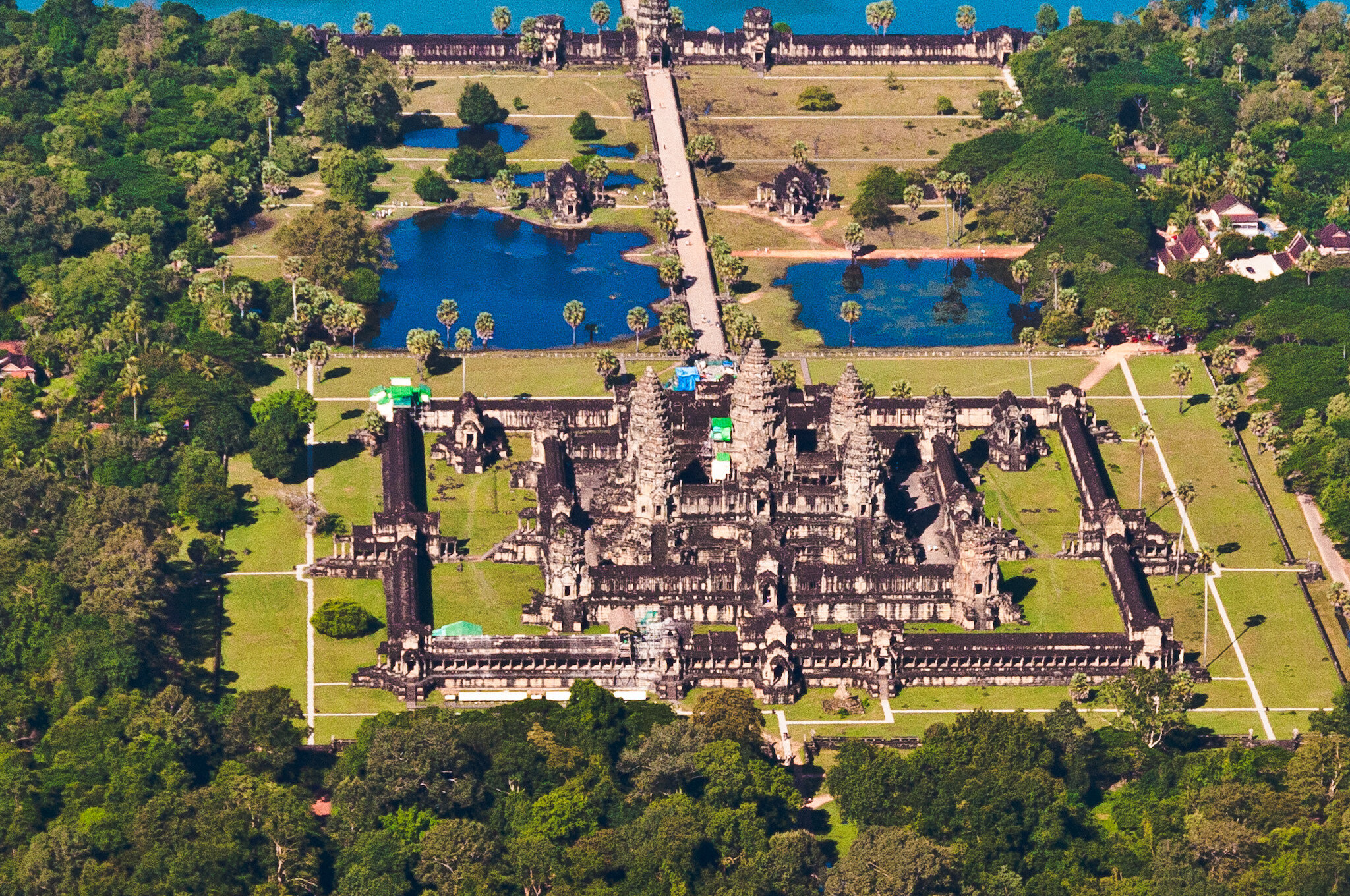TOURISM BALANCING ACT: THE IMPORTANCE OF HERITAGE SITE PRESERVATION IN CAMBODIA
BY ALEXIS TIMKO
Cambodia’s Ministry of Culture and Fine Arts recently rejected a proposal by casino giant NagaCorp to build a resort and theme park on the periphery of Angkor Wat. Located in Siem Reap, Angkor Wat is Cambodia’s top tourist attraction and a UNESCO World Heritage site. The temple complex is the world’s largest religious structure and has been standing since the early 12th century.
In the wake of rising Asian hate crimes across the world, the move to build at the site of a historic Cambodian monument is indicative of a larger issue for those of Asian descent. For decades, Cambodia has depended on the tourism industry as a key contributor to economic growth, indicating that decision-making may be more influenced by potential economic gain rather than cultural preservation. When financial gain is prioritized, cultural monuments like Angkor Wat may be at risk as Cambodia attempts to recover from the COVID-19 economic downturn.
Pitching its project as “Angkor Lake of Wonder,” NagaCorp sought to develop 75 hectares (185 acres) of land located just south of the Angkor temples. The development plan included hotels, a water theme park, indoor hi-tech theme parks, water cruise attractions, space for meetings, conferences and exhibitions, and food streets.
The developer, Hong Kong-based NagaCorp, is a multi-billion hotel, gaming, and leisure company that currently operates a large complex—NagaWorld—in Cambodia’s capital, Phnom Penh. The firm has an exclusive license to operate casinos in Phnom Penh and its surroundings and brought in just under $1.75 billion in gross gaming revenue in 2019. The organization has consistently drawn large crowds in a system that relies heavily on tourism for income.
When the proposal was initially discussed in February 2021, the United Nations Educational, Scientific and Cultural Organization (UNESCO) and conservation experts expressed concern over the impact the resort might have on the surrounding landscape. They stated that the proximity of NagaCorp’s project to the protected buffer zones of the Angkor Wat site as well as the scale, scope, and concept could “have an impact on the outstanding universal value for which Angkor was inscribed on the UNESCO World Heritage List.”
While the initial pitch was declined by Cambodia’s Ministry of Culture and Fine Arts, NagaCorp announced that it will be developing an updated plan in the coming months and still intends to build on the property.
By allowing the casino giant to move forward with its plans, Cambodia’s Ministry of Culture and Fine Arts is prioritizing economic stability and growth but risks jeopardizing an integral part of the nation’s past.
In their new proposal, NagaCorp has promised to “continue to develop fresh plans that are acceptable to achieve the objective of creating tourism venues and at the same time respecting the historical and spiritual wonder of the Angkor Wat site.” However, the very existence of the venue would threaten the conservation of the cultural monument.
Reconsideration of the proposal, which cites the need for increased visitation as its justification, appears to disregard UNESCO’s concerns and threatens the future of Angkor Wat. Tourism accounted for roughly 21 percent of Cambodia’s GDP in 2019 and continued to grow until the COVID-19 pandemic. However, visitation to Angkor Wat saw a stark decrease, even before the pandemic halted international travel. As fewer people came to see Angkor Wat, businesses in the area suffered greatly and the local economy plummeted.
At the start of 2020, Top Sopheak, spokesperson for the Ministry of Tourism, told the Khmer Times that the ministry had created a plan to reverse the nearly $20 million decline in temple pass sales during the previous year. According to Sopheak, one of the key methods for increasing visitation would be to focus on infrastructure and accessibility to tourism sites at or around Angkor Wat.
It is no surprise that shortly after this, in November 2020, NagaCorp was granted a 50-year lease on a plot of land about 500 meters—0.31 miles—south of the restricted grounds of Angkor Wat. The lease included a seven-year, rent-free period, with a possible extension of another three years.
It appears that agreeing to a lease of land in such close proximity to Angkor Wat was part of the ministry’s plan to increase tourism revenue in the area. Though the resort and theme park were not set to open until 2025, it promised hope for a cross-sell between visitors at Phnom Penh’s NagaWorld and the proposed “Angkor Lake of Wonder.”
However, large crowds with open pockets aren’t the only thing that would flock to Angkor Lake of Wonder. With people comes the potential for environmental damage, including massive amounts of litter.
In 2018, over 30 tons of litter were collected at Angkor Wat, triggering conversations about banning plastic on the premises. While no legislation was enacted to enforce a decrease in waste, locals and tourists were encouraged to practice more environmentally safe habits, such as carrying reusable water bottles.
By allowing the casino giant to move forward with its plans, Cambodia’s Ministry of Culture and Fine Arts is prioritizing economic stability and growth but risks jeopardizing an integral part of the nation’s past. The stakes are enormously high.
____________________
Alexis Timko is a junior at the University of Southern California majoring in Journalism and Law, History, Culture. She currently serves as an editor and reporter at USC Annenberg Media and as an intern for the International Human Rights Clinic at USC Gould School of Law. She is participating in a foreign affairs reporting class taught by Professor Philip Seib, a collaboration between the Pacific Council and the Annenberg School of Communication and Journalism.
The views and opinions expressed here are those of the author and do not necessarily reflect the official policy or position of the Pacific Council.
